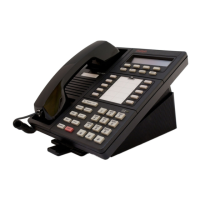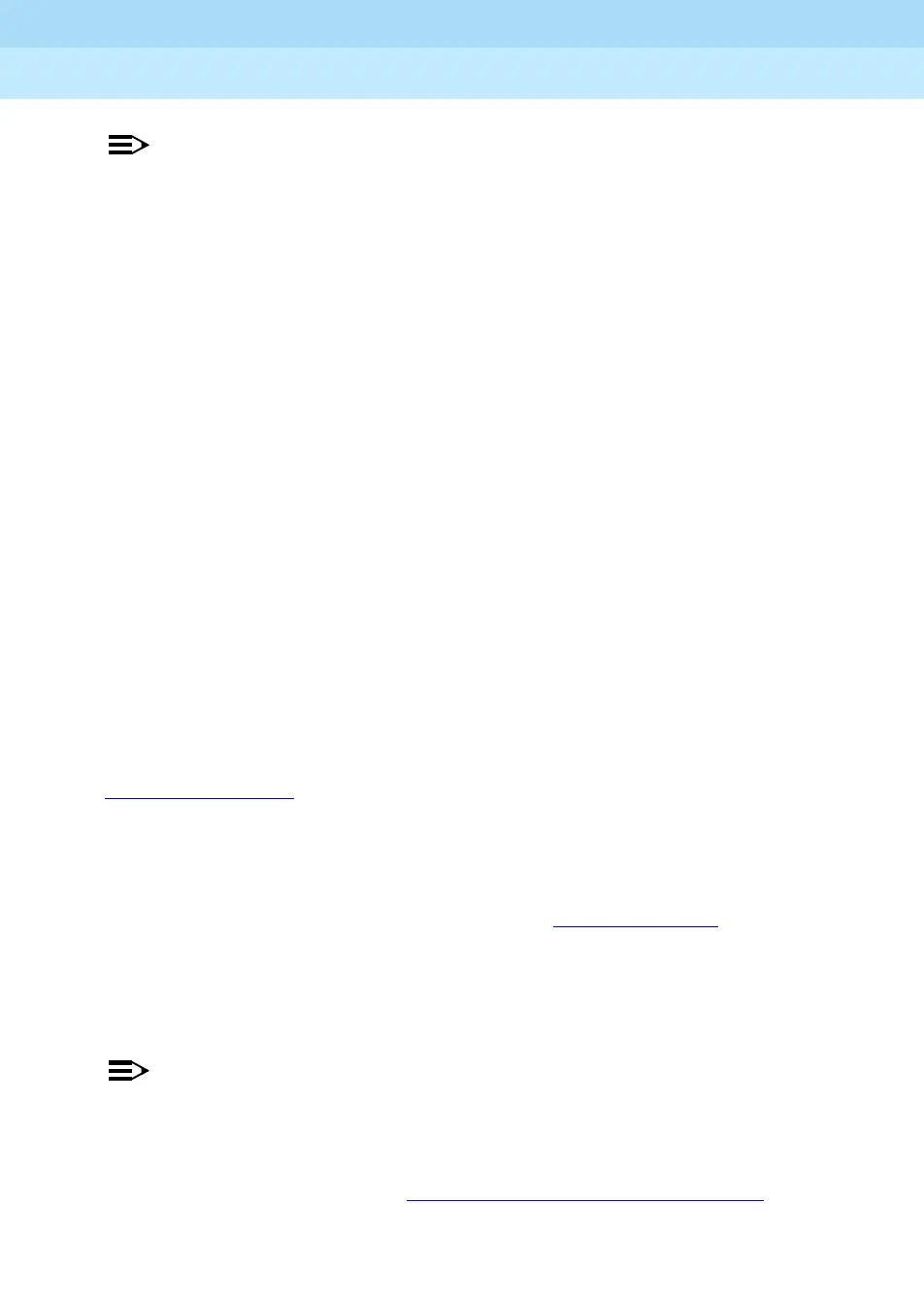MERLIN LEGEND Communications System Release 6.1
Feature Reference
555-661-110
Issue 1
August 1998
Features
Page 517Primary Rate Interface (PRI) and T1
NOTE:
PRI display support for Release 2.0 and later applies to MLX display
telephones only. There is no PRI display support for analog multiline
telephones.
■ All Incoming PRI Calls. When the calling party information is available
from the network, the Calling Party Number (CPN) appears on the user’s
display. Pressing the More button shows the Called Party Number on the
second screen of the display. If the Called Party Number is more than 15
characters in length, the digits at the end are dropped.
■ Group Calling. The MLX display of a calling group member shows the
original Called Party Number (before digit analysis). The same display
applies to PRI calls routed by dial plan to a group calling member
extension. Pressing the More button shows the Calling Party Number on
the second screen of the display.
■ Transfer without Consultation. In Release 2.0 and later systems,
pressing the More button on an MLX display telephone that is a transfer
destination shows the original Called Party Number (before digit analysis).
The same display applies to transferred PRI calls routed by dial plan.
In Release 6.0 and later systems (Hybrid/PBX mode only), display preferences for
incoming calls are set up by using the Extensions menu. This setup affects calls
arriving on tandem PRI trunks. You can set up MLX display telephones to display
the extension number of the caller on the remote system, the programmed label,
or both the label and the extension number. If ANI/ICLID information is provided
for an outside call, it appears instead of the extension number and/or label. See
“Display” on page 247
for additional details.
Outgoing Calls 33
Call-by-call service selection is a feature for outgoing calls in Release 2.0 and
later. It allows a group of B-channels to carry a variety of supported PRI services
programmed in the Call-by-Call Services Table (see Table 36, page 520
). The
service selected is based on the digits dialed and the bearer capability (voice,
data, or both) of the originating party. In Release 1.0 and 1.1 systems, an outgoing
call is carried on a static B-channel, that is, a B-channel dedicated to one specific
service.
NOTE:
In Release 6.0 and later systems (Hybrid/PBX mode only), where the
Switch Type setting is LEGEND-Ntwk or LEGEND-PBX, outgoing calls on
tandem PRI trunks are not routed using the features outlined in this
section. Instead, Remote Access and/or ARS can be used for such routing,
as well as UDP routing (see “Uniform Dial Plan Features” on page 710
) for
calls to extensions on networked switches. This cannot be changed unless
the Switch Type setting is modified.

